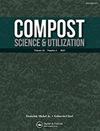不同肥料来源对甜菜微量营养素含量及食糖品质的影响
IF 0.9
4区 农林科学
Q3 ECOLOGY
引用次数: 1
摘要
摘要为了评价不同肥料来源对甜菜微量营养素含量和食糖品质的影响,三种肥料来源包括废蘑菇堆肥(SMC)(29t/ha)、羊粪(23t/ha)和硫酸锌(10 千克/公顷)、硫酸铜(10 千克/公顷)、硫酸铁(30 千克/公顷)、硫酸锰(15 公斤/公顷)和不施肥(对照)的试验于2013年在沙赫雷福德大学研究农场进行了三次重复的随机完全区组设计。结果表明,施肥处理对根系微量营养素含量、α-氨基-N蔗糖率和蔗糖产量有显著影响。Fe元素含量最高(90.39 mg/kg)、锌(39.15 mg/kg)和Cu(18.1 mg/kg)属于SMC处理。此外,与羊粪(1.05MEq/g)相比,SMC在甜菜中引起的α-氨基-N积累较少。SMC处理的蔗糖含量高于羊粪。同样,蔗糖百分比与甜菜根中微量元素锌、铜和锰呈显著正相关。因此,SMC的使用提高了甜菜根中微量营养素的含量,同时对甜菜食糖品质的改善起着重要作用。本文章由计算机程序翻译,如有差异,请以英文原文为准。
The Effect of Different Fertilizers’ Sources on Micronutrients’ Content and Sugar Quality of Sugar Beet
Abstract In order to evaluate the effect of different fertilizers’ sources on micronutrients’ content and sugar quality of sugar beet, three fertilizers’ sources include spent mushroom compost (SMC) (29 t/ha), sheep manure (23 t/ha), chemical fertilizer including zinc sulfate (10 kg/ha), copper sulfate (10 kg/ha), iron sulfate (30 kg/ha), manganese sulfate (15 kg/ha) and no fertilizer (control) were conducted in a randomized complete block design with three replications at Research Farm of Shahrekord University in 2013. The results showed that micronutrients’ content in the root, α-amino-N sucrose percentage and sucrose yield were significantly affected by fertilizer treatments. The highest elements’ content of Fe (90.39 mg/kg), Zn (39.15 mg/kg), and Cu (18.1 mg/kg) in sugar beet root belonged to SMC treatment. Besides, SMC caused less α-amino-N accumulation in sugar beet compared with sheep manure (1.05 MEq/g). Sucrose percentage was higher in SMC treatment than the sheep manure. Likewise, sucrose percentage revealed a significant positive correlation with micronutrients of zinc, copper, and manganese in sugar beet root. Therefore, it could be concluded that using SMC increases micronutrients’ content in the root and at the same time, plays an important role in sugar quality improvement of sugar beet.
求助全文
通过发布文献求助,成功后即可免费获取论文全文。
去求助
来源期刊

Compost Science & Utilization
农林科学-生态学
CiteScore
4.10
自引率
0.00%
发文量
0
审稿时长
>36 weeks
期刊介绍:
4 issues per year
Compost Science & Utilization is currently abstracted/indexed in: CABI Agriculture & Environment Abstracts, CSA Biotechnology and Environmental Engineering Abstracts, EBSCOhost Abstracts, Elsevier Compendex and GEOBASE Abstracts, PubMed, ProQuest Science Abstracts, and Thomson Reuters Biological Abstracts and Science Citation Index
 求助内容:
求助内容: 应助结果提醒方式:
应助结果提醒方式:


